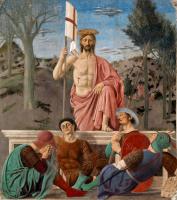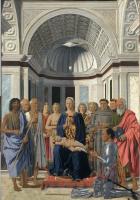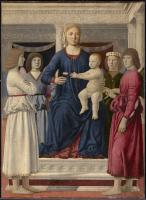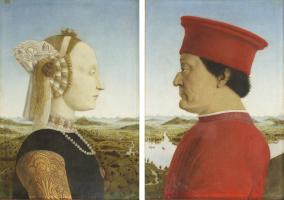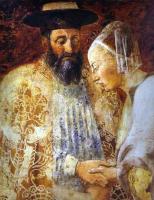Piero della Francesca
Piero della Francesca was born and lived most of his life in the small town of Borgo San Sepolcro in Umbria. From Uccello he learned the new science of perspective, and he may also have studied with Fra Angelico.
He was well known in his own time, and worked for celebrated patrons. His art was long neglected, but in the nineteenth century his reputation began to soar, and today he is one of the most popular Italian painters of the Early Renaissance.
He was passionately interested in mathematics and problems of perspective, and there are several books by him on these topics. His paintings were constructed with great precision, and this, combined with his use of pale colours, gives them the timelessness and serenity for which he is best known.
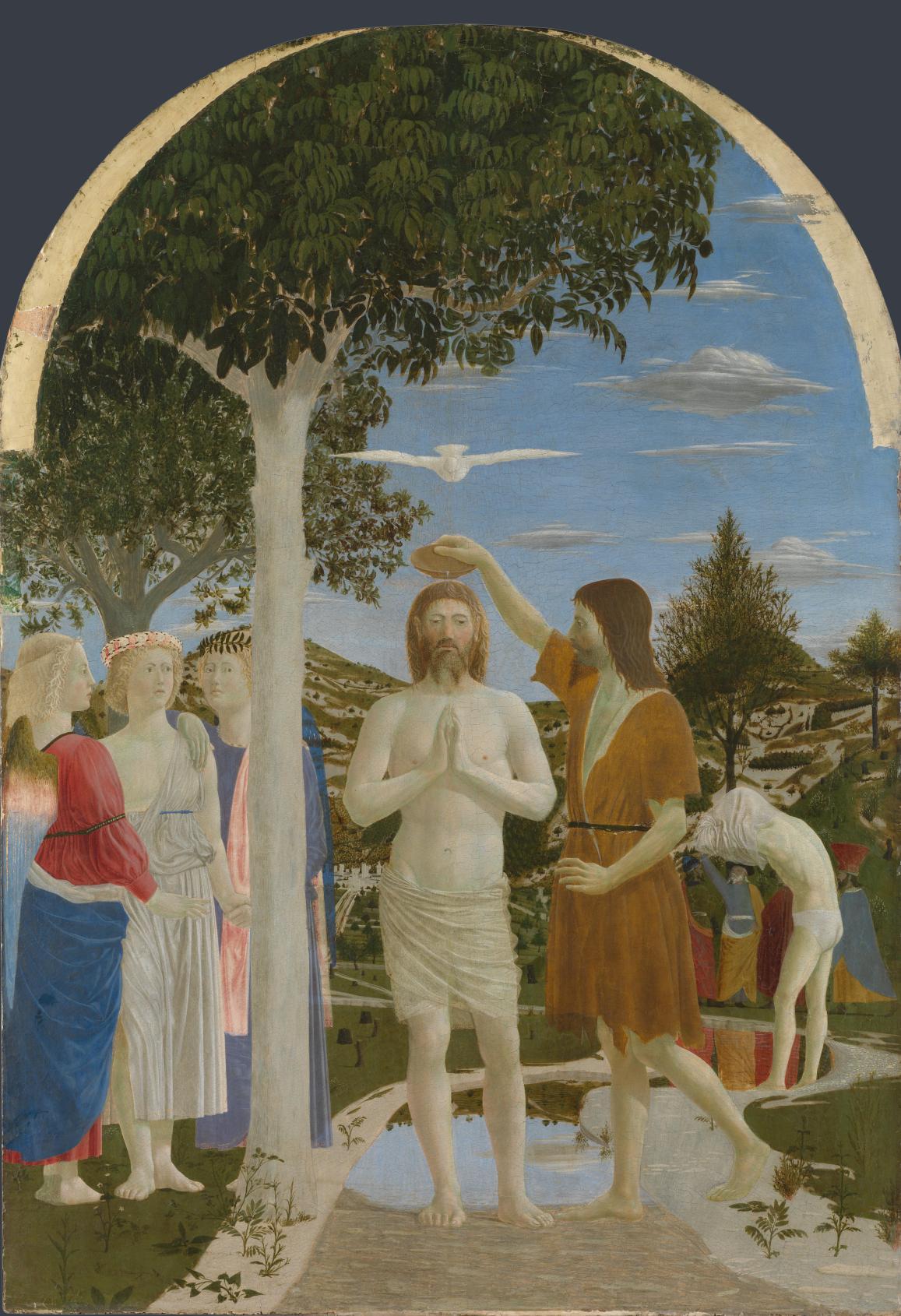 The Baptism is an early work and was created as part of an altarpiece for the
priory church of San Giovanni Battista in his native town. From the nave of the
church the eye would have been drawn directly to the central figure of Christ,
with the dove of the Holy Spirit above his head, and the scene framed by the
rounded arch.
The Baptism is an early work and was created as part of an altarpiece for the
priory church of San Giovanni Battista in his native town. From the nave of the
church the eye would have been drawn directly to the central figure of Christ,
with the dove of the Holy Spirit above his head, and the scene framed by the
rounded arch.
The calm and statuesque figures bathed in brilliantly clear light are set against a background of Umbrian valleys and hills, Piero’s own native landscape. The composition, although not symmetrical, has an exceptionally satisfying sense of balance. Dominating it are the figures of Christ and John the Baptist, who is anointing Christ’s head with water from a shallow bowl. Their two heads, and John the Baptist’s outstretched arm, are outlined against the clear blue sky, and this device effectively focuses our attention on them both.
The scene is framed by the dark leaves of a tree, whose pale slim trunk repeats the vertical lines of the figures. To the left are three angels, and in the middle ground other people can be seen preparing for baptism. The winding river Jordan, transposed to Umbria, reflects the sky, the scenery and the background figures. The arrangement may look simple, even random, but in fact the distribution of the figures and the spaces between them is carefully calculated to create an atmosphere of stillness and tranquillity. The drawing is definite and exact, and the figures solid and rounded, their feet accurately foreshortened. The soft clear colours stand out sharply in the light, and accentuate the peace and calm of this inspirational painting.
 This is known as the “Brera altarpiece: Madonna and Child with angels, saints
and Federico da Montefeltro, Duke of Urbino”. The Duke lost his right eye and
part of his nose in a tournament and was always shown facing left. This was
probably della Francesca’s last work before his eyesight failed but his mastery
of proportions is still remarkable. The ostrich egg hanging from shell in the
apse symbolizes the virgin birth and is echoed by the oval of the Madonna’s
head, placed in the precise centre of the composition.
This is known as the “Brera altarpiece: Madonna and Child with angels, saints
and Federico da Montefeltro, Duke of Urbino”. The Duke lost his right eye and
part of his nose in a tournament and was always shown facing left. This was
probably della Francesca’s last work before his eyesight failed but his mastery
of proportions is still remarkable. The ostrich egg hanging from shell in the
apse symbolizes the virgin birth and is echoed by the oval of the Madonna’s
head, placed in the precise centre of the composition.
 Battista Sforza was a member of the ruling Milanese family. She bore Federico
seven daughters and a son, after whose birth she died. Most historians believe
this diptych portrait was painted posthumously. The background shows Urbino and
the countryside.
Battista Sforza was a member of the ruling Milanese family. She bore Federico
seven daughters and a son, after whose birth she died. Most historians believe
this diptych portrait was painted posthumously. The background shows Urbino and
the countryside.


